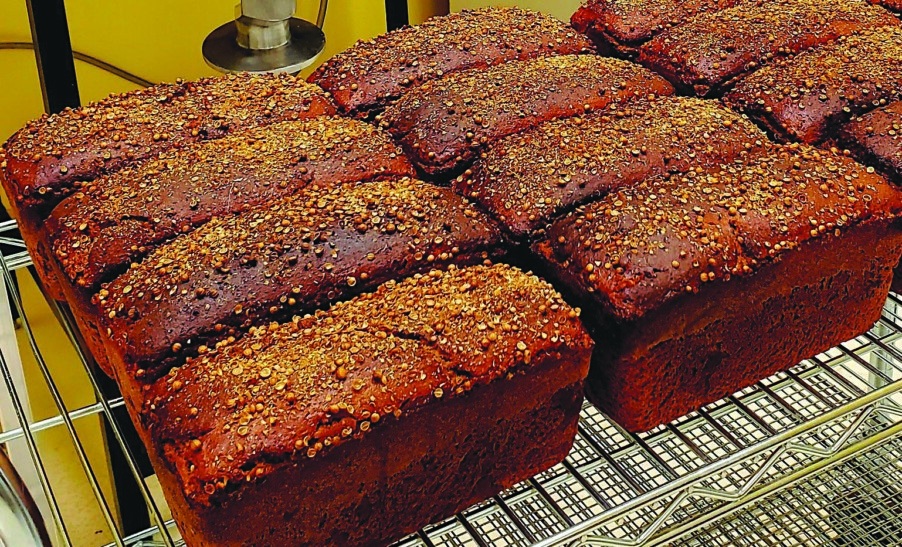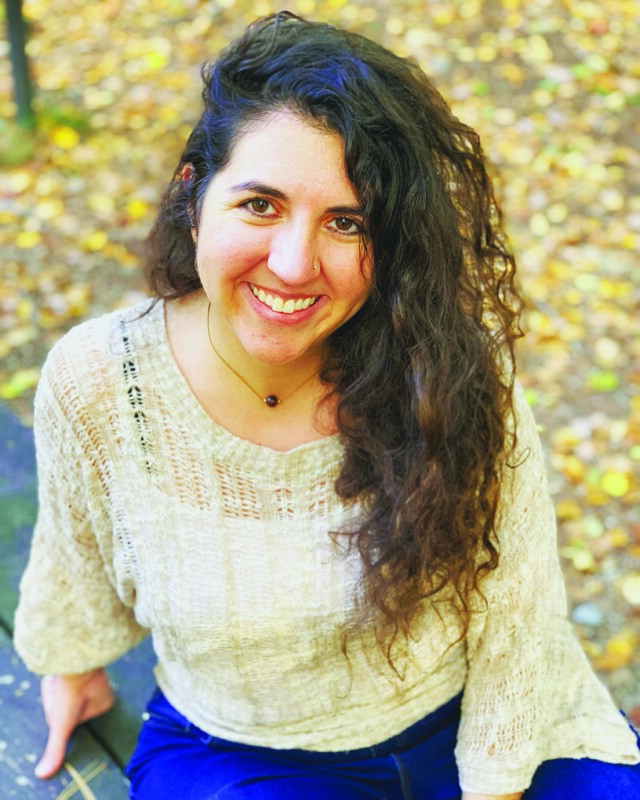Bread Makery now open in Salem
Andrey Bredstein found success in New Hampshire with his Russian baking business, Hidden Berry Cakes & Breads — he was perhaps best known for his rustic roadside trailer near the intersection of Routes 102 and 121 in Chester, where he lived until 2018. Now, after a short stint spent baking down in the Austin, Texas, area, Bredstein is back in the Granite State with an all new brick-and-mortar spot offering his own authentic Russian breads, tea cakes and pastries.
The Bread Makery, which opened last month in the nearby town of Salem, features all of the same menu items Bredstein has perfected over his years as a baker, from multiple types of freshly baked rye breads to traditional Russian baked goods like rum balls and wizard cakes. Breads are made fresh daily, and Bredstein even uses old Soviet-era standardized recipes. His bread baking journey began in 2002, when he moved to the United States from Moscow and found himself looking for a quality product that reminded him of home. Living in Texas at the time, when he couldn’t find a good loaf of bread, he began experimenting in his own kitchen.
“We started looking for options in baking ourselves. I don’t have any formal training as a baker. … I read books, I watched videos … [but] mostly I relied on my memory of taste,” Bredstein said. “I started making my own steps, and finally I was able to get a loaf that I like. Then our neighbors started asking, you know, ‘Can you bake me a loaf or two?’ And so we did that.”
Bredstein’s product lineup includes a white sandwich loaf, as well as three types of rye breads — a traditional Russian rye, a Jewish rye and a darker “special rye” made with rye malt called Borodinsky — that are unique for containing rye flour and using sourdough starters.
“The white bread we make early. I come in here at 6 [a.m.], so [by] 11-ish, we have a fresh white bread ready,” Bredstein said. “A rye bread we make later in the day, closer to the evening. … Until it’s cooled down inside, it’s not considered ready. So normally it’s ready at 11 at night and then we sell it the next morning. Its shelf life is long — it’s four or five days.”
In addition to his breads, Bredstein offers a selection of traditional Russian sweets regularly stocked in a pastry case. Among them is a wizard cake, a white cake with a custard filling and a chocolate glaze he equated to a Boston cream pie — it’s sold either by the slice or as a whole. You can also try rum balls, or bite-sized cakes that are mixed with cream, coated with cocoa butter and hand-shaped into the shape of a small potato. Tea cakes, the first product that Bredstein offered when he originally launched his business, are also regularly available at the Bread Makery. They feature dried fruit — traditionally raisins, although Bredstein admits he likes to fill his with dried cranberries — and are commonly enjoyed with a cup of hot tea.
A small retail area of the shop offers various items, like rye crisps — Bredstein slices down extra loaves of his Russian rye bread and slowly bakes them at a low temperature. They result in a crunchy snack that he said pairs well with beer or your favorite dipping sauce. Bredstein also sells three-pound bags of rye flour; imported bottles of kvass, a fermented drink popular in Russia and Ukraine; and cans of smoked sprats, small fish he said are similar to sardines.
“It’s made in the Baltic area, so Latvia, Lithuania [and] Estonia,” Bredstein said. “It’s [in] an oil, so when you put it on bread, it will soak a little bit in and it becomes a nice sandwich.”
In many ways, Bredstein is simply picking up where he left off a few years ago in Chester. In fact, he’s already seen customers walk through the door who ordered from him during his days on the trailer. Others are being introduced to his breads for the first time. But no matter who comes in to visit, Bredstein said he’s happy to back baking in the Granite State.
“Tastes are very different. When we lived in Chester, I would say maybe 80 percent of what we made was bread,” he said. “In Texas, nobody wanted bread … but they liked our pastries very much. Personally I’m most interested in making bread, especially rye bread.”
Bread Makery
Where: 115B Main St., Salem
Hours: Tuesday, noon to 6 p.m., and Wednesday through Saturday, 10 a.m. to 6 p.m. Closed on Sundays and Mondays.
More info: Visit breadmakery.com, find them on Facebook or call 912-7677
Featured photo: Borodinsky, or Russian “special rye” bread (right). Photo courtesy of Bread Makery in Salem.






